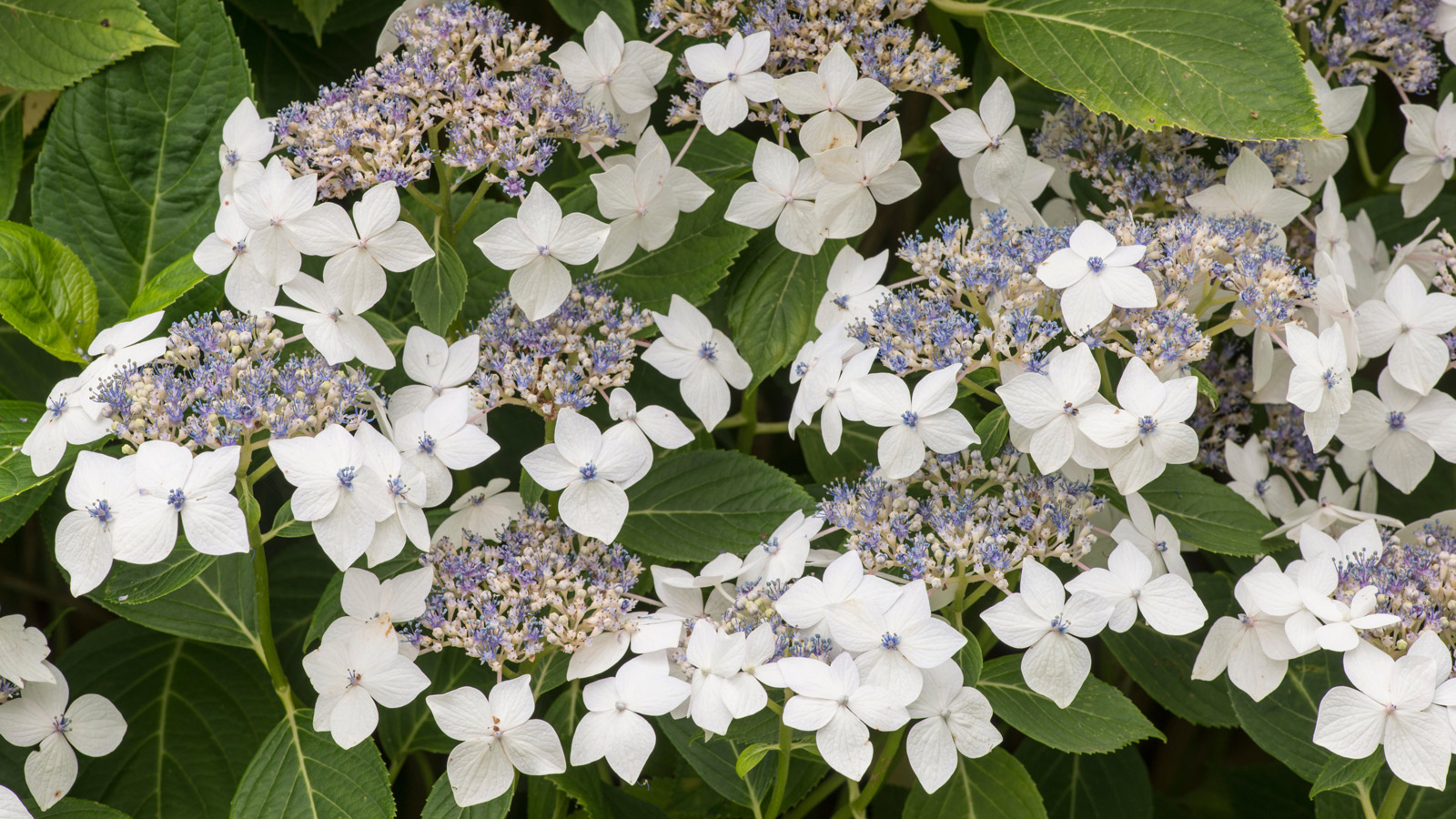Should you cover hydrangeas for spring frost? We ask the experts
Learn how to protect these incredible plants from spring frost by taking the appropriate steps


If you are looking to protect your hydrangeas for spring frost, consider covering them as a defensive tactic from the cold. But beware if the cover is left on for too long and the temperatures suddenly rises, you may risk overheating your hydrangeas and cause more harm than good.
When it comes to protecting hydrangeas from spring frost, the decision to cover them is nuanced. Covering hydrangeas can offer a vital shield against sudden temperature drops that threaten to damage the tender new growth appearing in spring, and is often used as a technique for winterizing hydrangeas.
Hydrangeas vary species-wise, some species are more cold tolerant than others, but if new buds have formed this can be affected by the late spring frost and will die. It is essential, however, to use breathable, lightweight materials. This minimizes the risk of trapping moisture against the plant, which can lead to fungal diseases. Discover more from hydrangea experts about the right way to protect these stunning plants.

Should you cover hydrangeas for spring frost?
The decision to cover your hydrangeas for spring frost depends on various factors, including the severity of the frost, the stage of growth of your hydrangeas, and the specific hydrangea variety you are cultivating. Below our experts have listed some considerations to help you make an informed decision.
Frost severity: Assess the severity of the forecasted frost. If temperatures are expected to dip significantly below freezing, especially during the budding or blooming stage of your hydrangeas, it's wise to take protective measures.
Hydrangea variety: According to Lorraine Ballato, author of Success with Hydrangeas, different hydrangea varieties have varying levels of cold tolerance. Some varieties are more resilient to frost than others. For instance, panicle hydrangeas (Hydrangea paniculata) tend to be more cold-hardy compared to mophead hydrangeas (Hydrangea macrophylla).
Stage of growth: Identifying the different stages of growth is important when learning how to grow hydrangeas and how to protect them from spring frost. If your hydrangeas are still in the dormant stage or have not yet started budding, they are less susceptible to frost damage. However, if they have begun to bud or bloom, they are more vulnerable and may benefit from protection.
Design expertise in your inbox – from inspiring decorating ideas and beautiful celebrity homes to practical gardening advice and shopping round-ups.

Lorraine Ballato is a hydrangea expert and the author of the international best selling book 'Success with Hydrangeas', available at Amazon. She is also an in-demand speaker throughout the US and the resident hydrangea expert at the New York Botanical Garden.
How to cover hydrangeas during spring frosts

If you decide to cover your hydrangeas, ensure that you use appropriate materials such as frost cloth, such as this one from Amazon, burlap rolls, or even old bedsheets.
‘Avoid using plastic, as it can trap moisture and cause more harm than good,’ says Chris Link, co-owner of Plant Addicts. ‘Erecting a simple frame around your hydrangeas can help prevent the covering from weighing down the delicate branches.’
To fit the hydrangeas, measure its height and cut four stakes of wood that are 18 inches longer. Branches or lumber are acceptable materials. Use a rubber mallet to drive the stakes into the ground. Place the stakes in the ground approximately 12 inches deep, with 6 inches sticking out above the hydrangeas.
When covering your hydrangeas, do so in the evening before the frost sets in and remove the covering during the day once temperatures rise above freezing. This allows the plants to receive adequate sunlight and airflow during daylight hours.
Applying a layer of organic mulch, such as Ribbon Organics organic compost from Amazon around the base of your hydrangeas can help regulate soil temperature and protect the roots from frost damage. Using leaf mold to mulch hydrangeas can also be beneficial, as the natural product protects roots and helps the soil to retain moisture.

Plant Addicts was founded in 2017 by Richard and Chris in Omaha, Nebraska. Plant Addicts provides plants and garden decor, direct from the nursery to customers' homes.
FAQs
When do hydrangeas need to be cut back?
When to prune hydrangeas depends on the variety you are growing. Hydrangea species that bloom in early spring should be cut back just after they finish flowering in May or June. Those that bloom in the summer should be pruned while they are dormant in December through February. Dead wood can be removed at any time of the year.
Remember, while covering your hydrangeas can provide temporary protection from spring frosts, it's also essential to focus on long-term strategies for promoting plant health and resilience. This includes proper watering, soil management, and selecting suitable planting locations.
Covering hydrangeas for spring frost is advisable, but doing so with the right materials and vigilance is key. Incorrect covering can do more harm than good, emphasizing the importance of expertise and care in these situations.

Seraphina is a contributing editor at Homes & Gardens, writing Solved features on organizing and storage. She loves to decorate and also grow her own produce from her home in London. Her previous experience includes working at Women's Health and Fabulous Magazine.